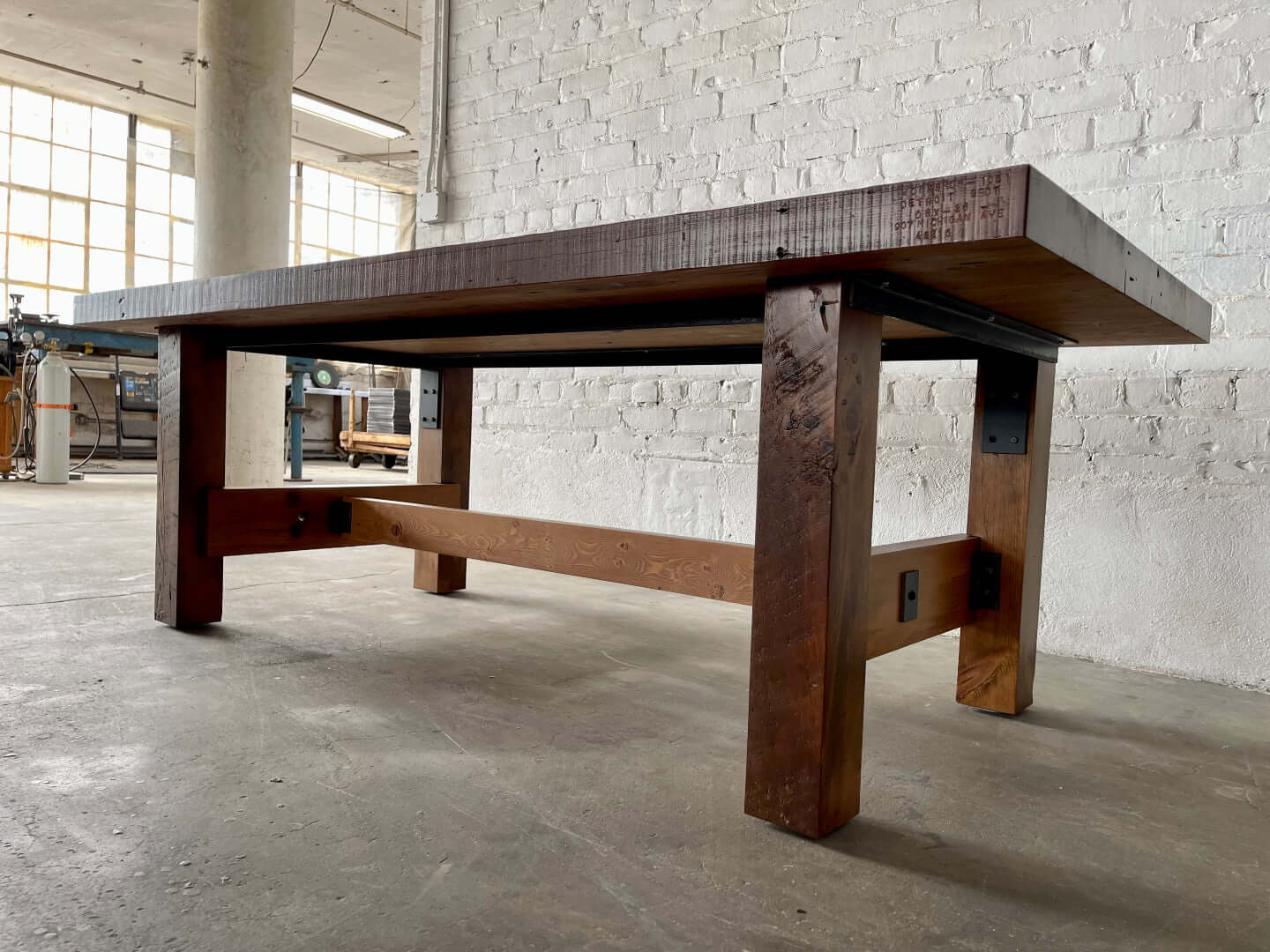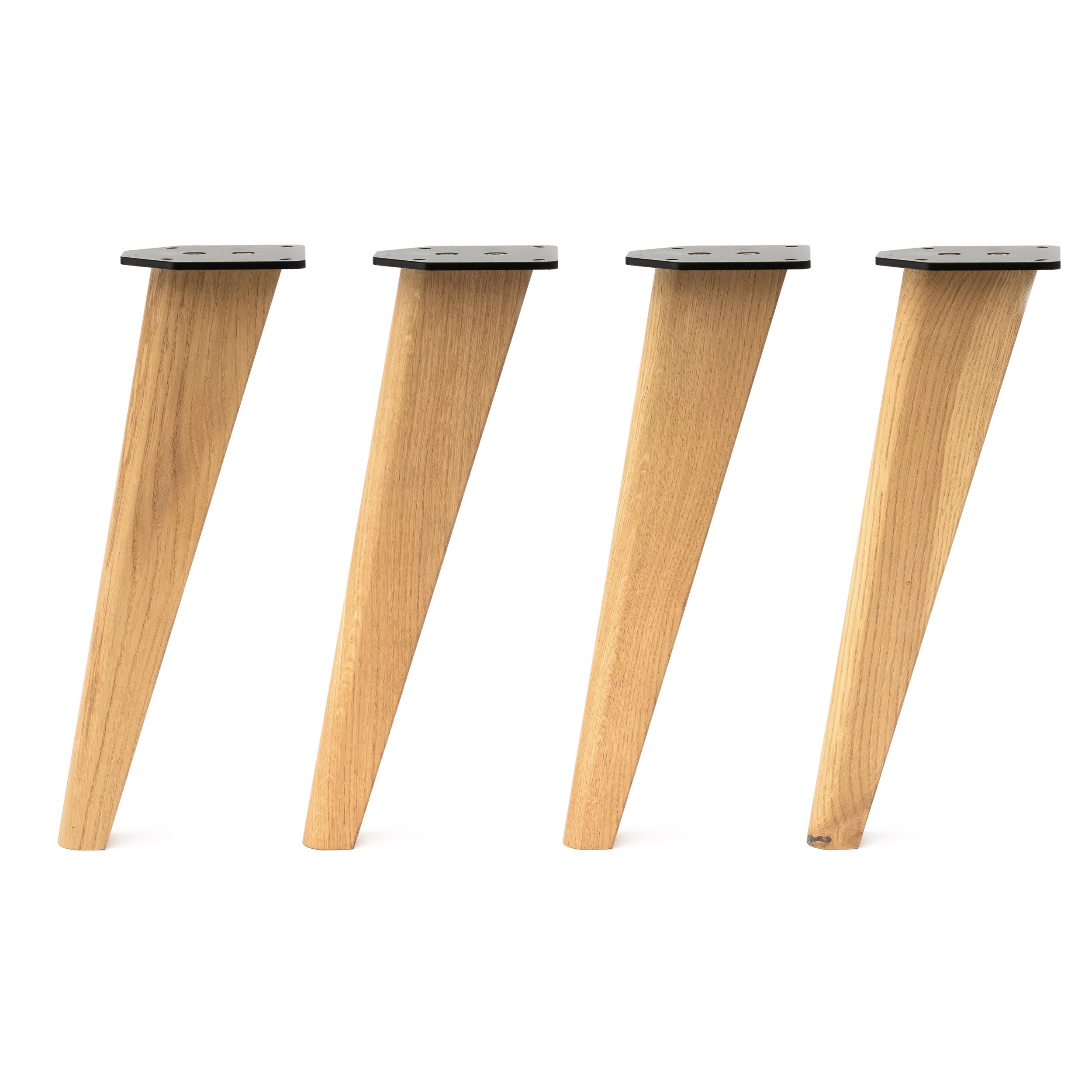Key Aspects to Bear In Mind for Dining Table Legs Wood Choices
When picking timber for eating table legs, several critical variables warrant mindful factor to consider to make sure both performance and aesthetic appeal. The choice of timber type, defined by its toughness and unique grain patterns, plays a critical function in the total layout and longevity of the piece. In addition, one should ponder upkeep requirements and the environmental implications of sourcing materials. As these elements link, they dramatically affect the last end result of your dining table. Nonetheless, understanding the nuances of each factor can be complex, leading to important decisions that merit additional exploration.
Wood Types and Qualities
When picking timber for dining table legs, it is important to understand the distinct characteristics of numerous wood kinds. Various woods provide distinctive advantages and disadvantages, influencing both the toughness and visual allure of the ended up product.
Oak, known for its impressive durability, likewise includes a prominent grain that can add character to the table. Cherry wood, with its abundant shade that grows over time, supplies a lavish look yet might call for more upkeep to protect against scratches.
On the other hand, softwoods like yearn and fir are much more budget-friendly and easier to deal with, yet they are much less long lasting than hardwoods. Pine is light-weight and features a cozy, rustic appearance, making it a favored choice for casual dining settings. Nevertheless, it is extra prone to scrapes and dents.
Comprehending these attributes will assist in making a notified decision to guarantee the legs of the dining table satisfy both functional and visual needs.
Grain Patterns and Visual Appeal
The timber's grain is not simply a visual feature; it conveys an one-of-a-kind character and charm to each piece. Various wood types display distinct grain patterns, ranging from the straight lines of maple to the complex swirls of oak and the striking number of walnut.
Moreover, the positioning and scale of the grain can affect the perceived dimension and style of the table. For example, bigger, more obvious grains might lend a vibrant, dramatic result, while finer, subtler grains can develop a fine-tuned, understated appearance. Furthermore, the ending up procedure can better improve these patterns, emphasizing the all-natural charm of the wood and drawing out abundant hues.
Ultimately, the option of grain pattern must balance with various other layout components, such as the tabletop and bordering furnishings, guaranteeing a natural aesthetic that elevates the dining experience. Thoughtful choice of wood grain not only adds to the table's appeal yet additionally shows the owner's preference and style.
Durability and Strength
The resilience and strength of table legs are vital factors to consider for making certain longevity and security in any kind of eating room. Choosing the appropriate timber is critical, as various species show differing levels of strength. Hardwoods such as oak, cherry, and maple are frequently favored for their fundamental stamina and resistance to use. These materials not just endure everyday usage yet additionally support hefty tons, making them optimal for dining tables that often fit numerous diners. Dining Table Legs Wood.

Eventually, purchasing top notch wood and robust building and construction approaches will generate an eating table that stands the test of time, while providing a reputable foundation for many meals shared amongst family members and buddies. Focusing on longevity and toughness guarantees that your table continues to be practical and cosmetically pleasing for several years to come.
Maintenance and Treatment
Correct upkeep and treatment are important for maintaining the longevity and toughness of dining table legs made from wood. Normal cleaning is crucial; using a soft, wet cloth guarantees that dust and debris do not gather, which can bring about scrapes and dullness. It is advisable to stay clear of extreme chemicals or abrasive products that might harm the surface.
In addition, applying a suitable wood polish or wax regularly can assist maintain the sheen and secure the wood from moisture and spills. It is essential Get More Info to adhere to the maker's recommendations pertaining to the type of item to make use of, as particular finishes may respond negatively to details chemicals.
Moisture and temperature fluctuations can likewise affect wood table legs, creating them to warp or split. It's finest to put the table away from direct sunshine and heat resources. If the table legs have any kind of scrapes or dents, addressing these immediately can prevent more damages.
Finally, occasionally inspecting the joints and screws for tightness is necessary to preserve architectural honesty (Dining Table Legs Wood). By adhering to these upkeep methods, house owners can ensure their wooden table legs continue to be useful and appealing for years ahead
Environmental Considerations
When choosing wood for dining table legs, it's essential to take environmental factors to consider into account. The sourcing and sustainability of wood are vital in reducing eco-friendly influence. Choosing wood from certified sources, such as those endorsed by the Forest Stewardship Council (FSC), ensures that the wood is harvested properly, promoting forest conservation and biodiversity.

Furthermore, neighborhood sourcing of timber lowers transport discharges, supporting local economic climates while lessening environmental effect. It is additionally a good idea to be mindful of the wood's therapy and finishing procedures, as particular chemicals can be unsafe to both human health and wellness and the setting. By focusing on sustainable wood choices, consumers can add to ecological preservation while appreciating the resilience and charm of their table legs.
Final Thought
In conclusion, selecting wood for eating table legs demands careful consideration of different variables, consisting of wood types, grain patterns, and longevity. Upkeep demands and ecological sustainability more impact timber selections, stressing the importance of sourcing from certified or redeemed materials.
When selecting timber for eating table legs, visit the site numerous vital aspects require mindful factor to consider to make sure both performance and aesthetic appeal.Proper upkeep and care are essential for maintaining the resilience and toughness of dining table legs made from wood.When choosing wood for eating the original source table legs, it's important to take environmental factors to consider into account. By focusing on lasting timber choices, consumers can contribute to ecological preservation while appreciating the resilience and elegance of their eating table legs.
In conclusion, picking timber for eating table legs necessitates cautious factor to consider of various aspects, including timber kinds, grain patterns, and resilience. Dining Table Legs Wood.